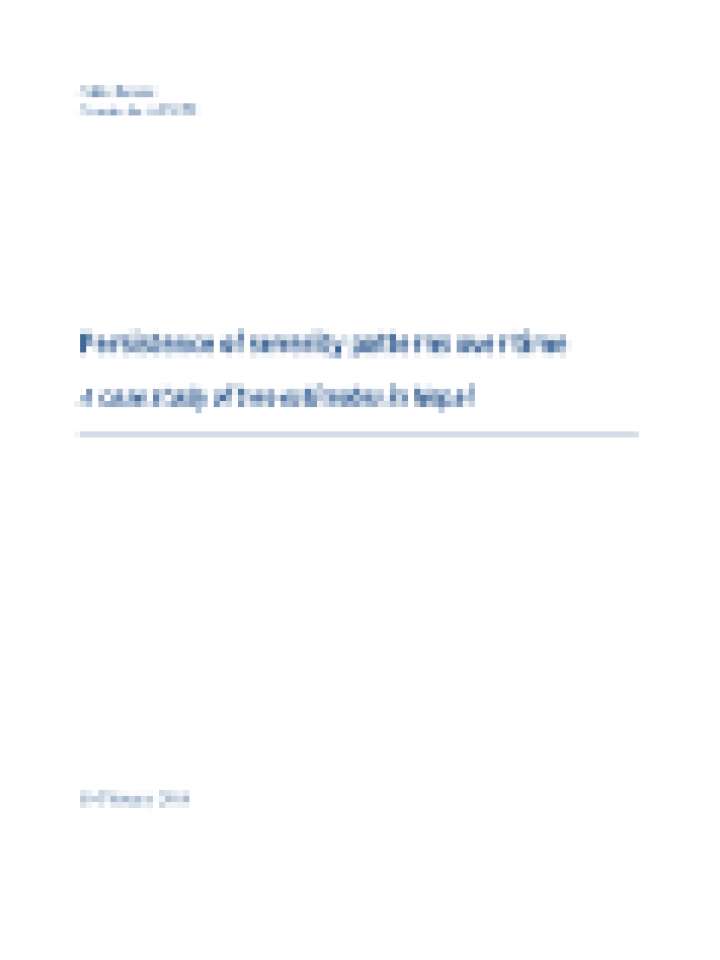Persistence of severity patterns over time: a case study of two estimates in Nepal
This study takes two measurements in Nepal, following the earthquakes in 2015 to study the degree and structure of persistence. It presents a conceptual model of severity measurement in each one of the dimensions: hazard, exposure and vulnerability. It analyses severity measures produced by UNOCHA for low-level administrative units – Village Development Committees (VDCs) - in April and June. Over 600 VDCs were evaluated at both points in time.
After sudden-onset disasters, needs assessments may produce severity estimates repeatedly, apace with updated information. The extent to which severity persists is not well known. According to the authors, nowhere have severity measures from subsequent needs assessments been correlated. There is a practical interest in gauging this correlation. If needs change rapidly in nature, degree and direction, severity estimates should be repeated frequently. If the severity pattern is more persistent, estimates have a longer shelf-life. Subsequent assessment may then focus more on indicators with direct operational value.
Explore further
